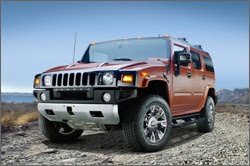Letting the Driver and Vehicle Licensing Agency (DVLA) know about eyesight conditions
When applying for your driving licence from the DVLA you should let them know if you have:
- any visual condition which affects both eyes (not including short or long sight or colour blindness)
- any visual condition which affects your sight (not including short or long sight or colour blindness) eg if you have sight in one eye only
If you have had sight correction surgery you should declare this when you apply for your provisional licence.
Eyesight requirements for the practical driving test
Before the practical driving test, your driving examiner will ask you to read the number plate on a stationary vehicle.
The distance requirement for the eyesight test using old style number plates is 20.5 metres or 20 metres if the new-style number plate is used. New-style number plates are easily identifiable starting with two letters eg AB 51 ABC.
If you can't speak English or have difficulty reading, you may copy down what you see.
You can’t read the first number plate
If you can't read the first number plate correctly, you'll be asked to read a second number plate, if you can't read this number plate correctly, you'll be allowed to walk forward until you're just over the appropriate distance away.
If you still can't read the number plate correctly, the examiner will ask you to read a third number plate and will measure the precise distance from this number plate. The distance will be 20.5 metres if you're asked to read an old-style number plate and 20 metres if you're asked to read a new-style number plate.
You can’t read the third number plate
If you can't read the third number plate correctly, and the examiner is satisfied that you don't meet the required eyesight standard, you'll fail the driving test, and the practical test will not continue.
This test failure will be marked on the driving test report form (DL25) with a mark in the 'Item 1' box. Your interpretation of the number plate along with the correct one will be written on the back of the form along with the measured distance.
Wearing glasses/corrective lenses to pass the eyesight test
If you can only read a number plate using glasses/corrective lenses for the eyesight test, the law requires you wear them whenever you are driving and throughout your test. You're not allowed to remove your glasses/corrective lenses when carrying out test manoeuvres (reversing etc).
If you used your glasses/corrective lenses to read the number plate and take off/out your glasses/corrective lenses during the practical test, your examiner will remind you the law requires you to wear them; if you refuse to wear them, the test will not continue.
If you have broken, forgotten or brought the wrong glasses, you should tell your examiner at the start of the test. If you don't tell the examiner and attempt and fail the eyesight test, your test will be recorded as a failure and the remainder of the test will not go ahead.
Failing the eyesight test
Should you fail the eyesight requirement; the examiner will ask you to sign a form DL.77 –which acknowledges you were unable to comply with the eyesight requirements. The examiner (using form DL.77 form) will notify the DVLA that you did not meet the eyesight requirements and your licence will be revoked.
To reapply for your licence, send to DVLA an ‘Application for a Driving Licence’ (D1), available from the DVLA form ordering service or Post Office® branches. You can also download and complete the medical questionnaire V1 and return it with your D1 form.
When your application arrives at DVLA they’ll ask the Driving Standards Agency (DSA) to conduct a separate eyesight test for you at a test centre. If you’re successful you’ll still have to pass the DSA standard eyesight test at your next practical driving test.





